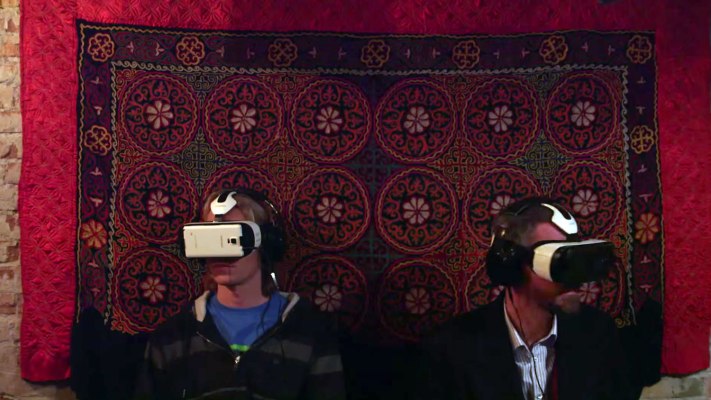Editor’s note: Matt Howard is a managing partner at Norwest Venture Partners with more than 25 years of experience and focuses his efforts on mobile, security, rich media, cloud based services/applications, networking and storage sectors.
True to its reputation, the Sundance Film Festival debuted a variety of fascinating and cutting-edge independent films during its annual run in Park City recently, but this year’s biggest breakout star was not celluloid. It was technology, as Silicon Valley innovation invaded this year’s festival in a big way.
Filmmakers, studio representatives and festival attendees rubbed elbows with the stars of the Valley as the entertainment and tech worlds collided, sending ripples through Park City about the role technology can play in film and what this means for the future of entertainment. From a VC perspective, it’s exciting to see innovations that have been embraced by the tech industry and make the crossover to the entertainment world. Below are some of the new technologies that made headlines at Sundance and trends that are worth watching.
Welcome to My Virtual Reality
To say that virtual reality stole the stage at Sundance is an understatement; it made headlines everywhere. Even while Hollywood celebrities like Nicole Kidman, Lena Dunham, Kevin Bacon and James Franco strolled the streets of Park City, one of the biggest attractions could be found at the New Frontier, an installation devoted to virtual reality and immersive experiences.
This installation offered a unique and engaging experience on the intersection of art, film and multimedia technology. Projects on display in this section included the popular virtual reality flight simulator Birdly that allowed individuals to put on virtual reality goggles and headphones and simulated the experience of flying in a movie.
While the gaming community has long embraced virtual reality, filmmakers and storytellers are just starting to dip their toes into these experiences, which deliver the powerful quality of 360-degree immersion of what’s happening in front of you and all around you.
Social Media Meets Celebrity
Hollywood celebrities might still reign supreme at Sundance, but there’s a new celebrity crowd Sundance is courting and this group is social media stars. Instagrammers, Viners, YouTubers, vloggers and bloggers who draw large followers across their social media channels appeal to brands because of the way they integrate products and showcase them in an authentic way.
A simple social media post featuring a product can translate to dollars in the same way tabloid shots with a celebrity used to. With social media stars getting the Hollywood treatment at Sundance, brands will start to see more of these two worlds colliding as they try to determine the best way to reach new sales opportunities and grow brand participation.
While some of the best curators can be found in our own social media channels, companies like Snapchat are also getting on board with this idea. During Sundance, the company launched Snapchat Discover, which lets users watch daily stories compiled by their favorite brands. With brands, artists and publishers curating content at the forefront of Snapchat’s product, the company puts a human touch on what’s popular and what’s not, much in the same way social media stars set the conversation and tone at Sundance.
Park City Walls Collapse with Interactive Online Events
Technology at the Sundance Film Festival is reaching audiences like never before, and this year, Blue Jeans Network debuted its new interactive online events service Primetime, to enhance attendee engagement and offer active video participation for remote audiences.
For the first time, Primetime provided the technology for a live, interactive Q&A following an advance screening of the premiere of “Most Likely to Succeed,” a feature-length documentary that follows students, teachers and parents at San Diego’s High Tech High, which offers a tech-based education curriculum. After the screening, the audience had the chance to interact with the filmmakers and chat with remote students in San Diego via Blue Jeans Primetime.
Greg Whiteley and Ted Dintersmith, the film’s director and executive producer, were both on stage, but the real conversation was between the 500 Salt Lake City high school students in the audience and the San Diego-based High Tech High classroom. With Primetime, Blue Jeans was able to extend the reach of the festival beyond the borders of Park City.
Movies Made from Your Mobile
Without a doubt, the iPhone has reinvented and changed the way we consume media from music to photography and now film. One of the breakout films at the Sundance Film Festival was Tangerine. The film was shot almost entirely on an iPhone 5s using an $8 app called Filmic Pro, showing audiences that you don’t need a multi-million dollar budget to make a splash on the festival circuit.
Smartphone film capture has been growing in popularity over the last few years, and movies like Tangerine show how the trend is moving from fad to feature-length. Mobile devices like the iPhone not only quickly capture clips and sound bites and allow for editing directly in the device, but they also provided a rise in quality beyond the grainy clips of yesteryear. There’s a lot that can be done with an iPhone, and as filmmaker Sean Backer proved, there’s no telling what the industry will create next.
These are some of the ways that technology made headlines at the Sundance Film Festival this year and it’s bound to be a kicking off point on what’s to come, not only at Sundance but other global festivals and other art and entertainment events.
As the worlds of Hollywood and Silicon Valley find more ways to converge, we can only expect to see greater innovations that enhance works of art, reach new audiences and push the boundaries of what is viewed as “entertainment.”
